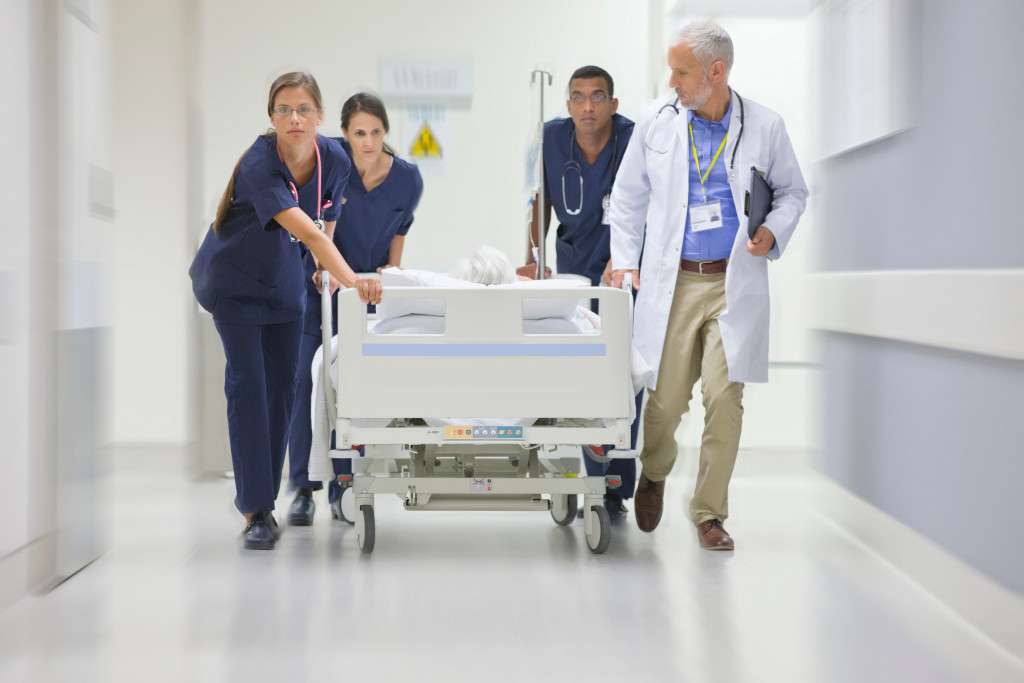Disclaimer: This website provides health information for educational purposes only and is not a substitute for professional medical advice, diagnosis, or treatment. Always seek the guidance of a qualified healthcare provider with any questions you may have.
Medical errors are the third leading cause of death in America, according to a study published in the Journal of Patient Safety. In fact, healthcare-associated infections (HAIs) are also a leading cause of death, accounting for approximately 100,000 deaths each year. Clearly, patient safety is a significant concern in the healthcare industry. There are many ways to improve patient safety in healthcare facilities, but implementing standardized protocols is one of the most effective methods. Read on to learn more about how standardized protocols can improve patient safety and prevent HAIs.
Implement standardized protocols
In any healthcare facility, the safety of patients should be the top priority. Unfortunately, with the vast number of different procedures and treatments performed daily, it is all too easy for errors to occur. One way to help improve patient safety is to implement standardized protocols. For example, when a patient is admitted to the hospital, there should be a standard set of procedures to ensure that the patient receives the best possible care. Having a set way of doing things decreases the chances of something being done incorrectly.
In addition, it also allows for better communication between different members of the healthcare team. It becomes easier to catch mistakes with everyone on the same page before they happen. Of course, standardized protocols are not a cure-all, but they can help make a healthcare facility run more smoothly and reduce the likelihood of errors occurring.
Improve your security cameras
It’s no secret that security cameras are a vital part of any healthcare facility. They help to deter crime, protect patients and staff, and gather evidence in the event of an incident. However, security cameras are only as effective as the people monitoring them. Traditional security camera systems require someone to constantly watch the footage, which can be both tedious and expensive.
However, a new generation of security camera analytics software can automatically detect and flag potential security threats. By upgrading your security camera system to include this type of software, you can improve patient safety and save money on security costs.
Increase staff training
 One of the most critical things healthcare facilities can do to improve patient safety is to increase staff training. By ensuring that all staff is up-to-date on best practices and current procedures, healthcare facilities can help to prevent errors and accidents. In addition, increasing staff training can help to create a culture of safety in which employees feel empowered to speak up when they see something that could potentially be hazardous. Furthermore, healthcare facilities can show their commitment to providing safe, high-quality care by investing in staff training. Ultimately, increasing staff training is crucial to improving patient safety in healthcare facilities.
One of the most critical things healthcare facilities can do to improve patient safety is to increase staff training. By ensuring that all staff is up-to-date on best practices and current procedures, healthcare facilities can help to prevent errors and accidents. In addition, increasing staff training can help to create a culture of safety in which employees feel empowered to speak up when they see something that could potentially be hazardous. Furthermore, healthcare facilities can show their commitment to providing safe, high-quality care by investing in staff training. Ultimately, increasing staff training is crucial to improving patient safety in healthcare facilities.
Improve in-house communication
One of the most critical aspects of patient safety is clear communication between all healthcare team members. When everyone is on the same page, it reduces the likelihood of errors and potential mishaps. There are several ways to improve in-house communication, such as holding regular team meetings, using standardized terminology, and implementing a robust system for tracking patient information. Additionally, it is crucial to encourage an open and honest culture where employees feel comfortable speaking up if they have concerns. By taking these steps, healthcare facilities can create an environment where communication is a top priority, improving patient safety.
Maintain a clean and disinfected environment
When most people think of healthcare, they probably don’t think about the importance of a clean and disinfected environment. But the truth is, maintaining a clean and disinfected environment is essential to patient safety. By removing dirt, bacteria, and other contaminants, healthcare facilities can help prevent infection.
In addition, regular cleaning and disinfection help reduce the risk of cross-contamination, which can occur when contaminated surfaces contact patients or medical equipment. Of course, cleaning and disinfection are only part of a broader effort to improve patient safety. But by taking measures to ensure a clean and disinfected environment, healthcare facilities can significantly contribute to protecting their patients’ health.
Develop comprehensive procedures to prevent errors
Despite years of efforts to improve patient safety in healthcare facilities, preventable errors are still too common. One way to help address this problem is to develop comprehensive procedures to prevent errors. These procedures should be tailored to the specific needs of each facility. Still, they should always aim to eliminate potential sources of error. For example, clear and concise communication among staff members is essential in preventing medication errors. In addition, procedures should be put in place for double-checking test results and X-rays to ensure accuracy. Healthcare facilities can help create a safer environment for both patients and staff by taking these steps.
The bottom line
Patient safety is a top priority for healthcare facilities. By taking steps to improve security, increase staff training, improve in-house communication, maintain a clean and disinfected environment, and develop comprehensive procedures to prevent errors, healthcare facilities can significantly contribute to protecting their patients’ health.

